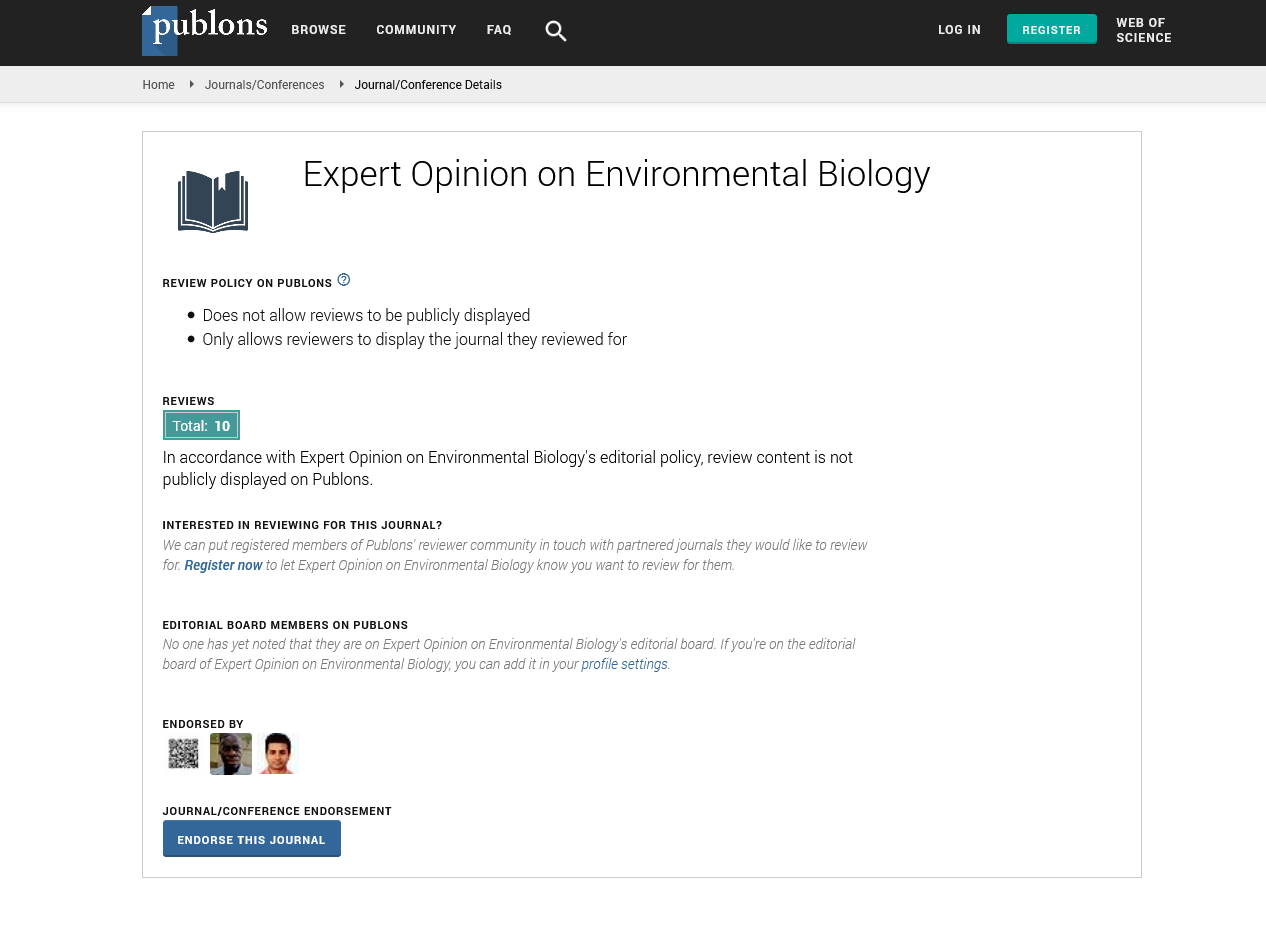Response of soybean yield components and allocation of dry matter to increased temperature and CO2 concentration
Milton E Pereira Flores, Flavio Justino, Ursula M Ruiz Vera, Frode Stordal, Anderson A Martins Melo and Rafael de Avila Rodrigues
Vicosa Federal University, Brazil
Carl R Woese Institute for Genomic Biology, University of Illinois, USA
University of Oslo, Norway
Federal University of Goias, Brazil
: Expert Opin Environ Biol
Abstract
Future climatic scenarios can influence crop yield levels and induce hunger if no actions are taken. In this study, we evaluated the effect of increased temperature and CO2 concentration on soybean yield components and biomass partitioning that ultimately determines the crop productivity. This is conducted for two soybean genotypes that differ in their canopy and life cycles. Experiments were set as follows: T1 -ambient temperature and 390 μmol CO2 mol-1; T2 -ambient air temperature +2.7oC and ambient CO2 and T3 -ambient air temperature +2.7oC and 750 μmol CO2 mol-1. Results indicate that soybean under elevated CO2 and temperature (T3), were taller and grains weighed more than under the ambient conditions in both cultivars types. However, yield has not increased substantially due to reductions in the ratio of number of branch/plant, pods/branch and grains/ branch which lead also to a lesser number of total pods and grains per plant. The increase of temperature favored the number of pods and grains on branches in the modern type cultivar and on racemes in the old cultivar. This resulted in more yield in both cultivars versus plants grown in the current ambient and higher CO2 concentration plus temperature. In both cultivars, the pods and grains partition were higher on the ontogenically oldest four branches and racemes, with decrease in the other upper ones. In addition, the biomass allocation in vegetative tissues was higher than reproductive biomass, with intensity cultivar dependent. We concluded that in future, the yield could be limited by reduction of the numbers of branches and racemes in plant, and by alteration at source-sink relation. It indicates that the changes in canopy architecture are needed to better take advantage of the increasing concentration of CO2.
Biography
E-mail: milton.flores@ufv.br
 Spanish
Spanish  Chinese
Chinese  Russian
Russian  German
German  French
French  Japanese
Japanese  Portuguese
Portuguese  Hindi
Hindi 
